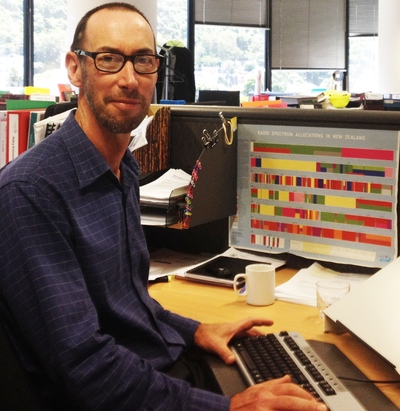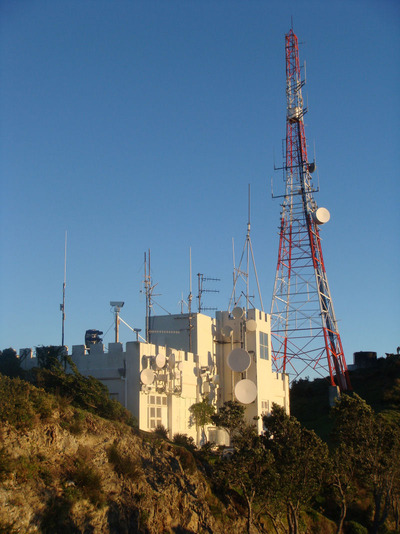Interview: Len Starling, Radio Spectrum Management
Thursday, 13 February, 2014
The New Zealand government recently concluded the second and final 700 MHz auction round. Critical Comms gets an update on the process and what happens now.
Many nations have embraced the notion of the digital dividend, whereby spectrum used by analog television broadcasts has been vacated … leaving a huge block of 700 MHz available for new applications. The sale of blocks of this spectrum is improving government coffers while also enabling improved services and coverage by the winning bidders.
To find out more about the recent New Zealand 700 MHz auction rounds and some general spectrum matters, we spoke with Len Starling, Manager of Radio Spectrum Policy & Planning in the New Zealand government’s Radio Spectrum Management (RSM) agency. RSM provides policy advice to the government on the allocation of the radio spectrum, and administering the Radiocommunications Act 1989 and supporting Radiocommunications Regulations 2001.

For those not familiar with the 700 MHz auction, how, why and when did it come about?
As with many other countries, New Zealand has been converting to digital television. New Zealand analog television previously used VHF I and III and UHF bands IV and V. Digital switchover and restacking of the digital frequencies was completed in December 2013. Digital terrestrial television is now using only the 500-700 MHz band. That freed up the 700 MHz band for other uses. After a public consultation it was determined that cellular mobile was probably the highest value use of that band.
The 700 MHz spectrum auction started on 29 October 2013 and bidding to allocate the lots was completed on 22 January 2014. The auction results are subject to clearance from the Commerce Commission. The final auction phase, to assign specific frequencies to the successful bidders, will be held after the Commerce Commission decision is announced.
In practical terms, the only bidders for the band would have been telcos. But just crystal-balling, if a non-telco user had come along and wanted to bid, would that have been allowed?
The rights and implementation requirements were configured primarily for use by mobile network operators using 4G LTE. However, the requirements were broad enough that a non-cellular network operator could have participated if they had wished.
What are some of the requirements that the successful bidders must comply with, and over what timescales?
The key requirements and timescales were:
- For 2x5 MHz blocks, new operators or existing non-cellular network operators must achieve 50% national population coverage within five years; existing cellular network operators must upgrade 75% of existing rural cell sites to 4G using 700 MHz (to a maximum of 300 cell sites).
- For 2x10 MHz blocks, new operators or existing non-cellular network operators must achieve 50% national population coverage, including at least 30% population coverage within any given region, within five years; existing cellular network operators must upgrade 75% of existing rural cell sites to 4G using 700 MHz (to a maximum of 300 cell sites).
- For 2x15 MHz blocks, new operators or existing non-cellular network operators must achieve 50% national population coverage, including at least 30% population coverage within any given region, within five years; existing cellular network operators must upgrade 75% of existing rural cell sites to 4G using 700 MHz (to a maximum of 300 cell sites). Plus for all successful bidders there is a requirement for five new coverage cell sites (base stations) per year, for first five years.
- And for 2x20 MHz (if available) blocks, new operators or existing non-cellular network operators must achieve 75% national population coverage, including at least 50% population coverage within any given region, within five years; existing cellular network operators must upgrade 75% of existing rural cell sites to 4G using 700 MHz (to a maximum of 300 cell sites). Plus for all successful bidders there is a requirement for 10 new coverage cell sites (base stations) per year, for first five years.

Will you be closely monitoring the bidders to ensure compliance?
Yes. We endeavour to create obligations that are easy to monitor. For example, in this auction some of the obligations relate to building of new cellphone towers or implementation of 700 MHz LTE on existing towers. These are easy to verify.
Were you surprised that you still had a block remaining after the first auction?
It was always a possibility. Our three operators each have 2 x 20 MHz of 1800 MHz spectrum they can use for urban 4G services and 2x10 MHz of 700 MHz is enough to provide rural and in-building coverage.
How do the prices obtained in the first and second auctions compare?
In the first phase of the auction eight lots (each of 2x5 MHz) sold for the reserve price of NZ$22m. The reserve price and acquisition limits were set to enable all three existing mobile network operators to participate in the auction. In the supplementary (second) round the single (ninth) lot sold for NZ$83m.
What will the government do with the money?
The money goes into the Crown Account for general government spending. As the New Zealand government uses accrual accounting the revenue is recognised progressively over the life of the rights. This means that the auction revenue doesn’t create an artificial ‘blip’ in government revenue in the year of the auction.
Leading up to and during the process, had you liaised with regulators in other countries to get the benefit of their experiences in 700 MHz auctions? And are any other countries in contact with you to get the benefit of your experiences?
Yes. In particular we meet regularly with the regulators from the United Kingdom, Canada, Hong Kong and Australia to share experiences. And in the last year we’ve been pleased to host visits from regulators from the People’s Republic of China, Indonesia and Thailand.
Is there a push for bandwidth to be put aside for their use for public safety broadband in New Zealand too, and what is the official attitude to this, particularly in the light of recent natural disasters?
There is interest in a broadband emergency services network and we have done some preliminary work identifying suitable frequencies. In the meantime various agencies are experimenting with smart terminals running on commercial networks. Harmonisation will be an important consideration in the spectrum allocation. In particular, New Zealand regularly receives assistance from, and gives assistance to, Australian services, and harmonisation with an Australian allocation is likely to be a priority.
With New Zealand’s fairly small population, is there much in the way of a spectrum squeeze?
New Zealand’s isolation and low population density mean that we have a relative abundance of spectrum. However, that low population density means that the economics of delivering services are challenging. As a consequence, our networks tend to be ‘infrastructure light’ and ‘spectrum heavy’ relative to more populous countries. The result is that we still face pressures to provide spectrum, particularly for cellular mobile.
Lancashire Police adds in-car video to full vehicle fleet
Motorola Solutions' M500 in-car video solution observes a vehicle's environment from...
Softil issues its 2025 outlook for mission-critical communications
Overall, MCX has built significant momentum globally and this trend is expected to accelerate in...
Blue Mountains hiker rescued with support from Telco Authority
A hiker was rescued from Blue Mountains bushland in December after going missing for six days,...




